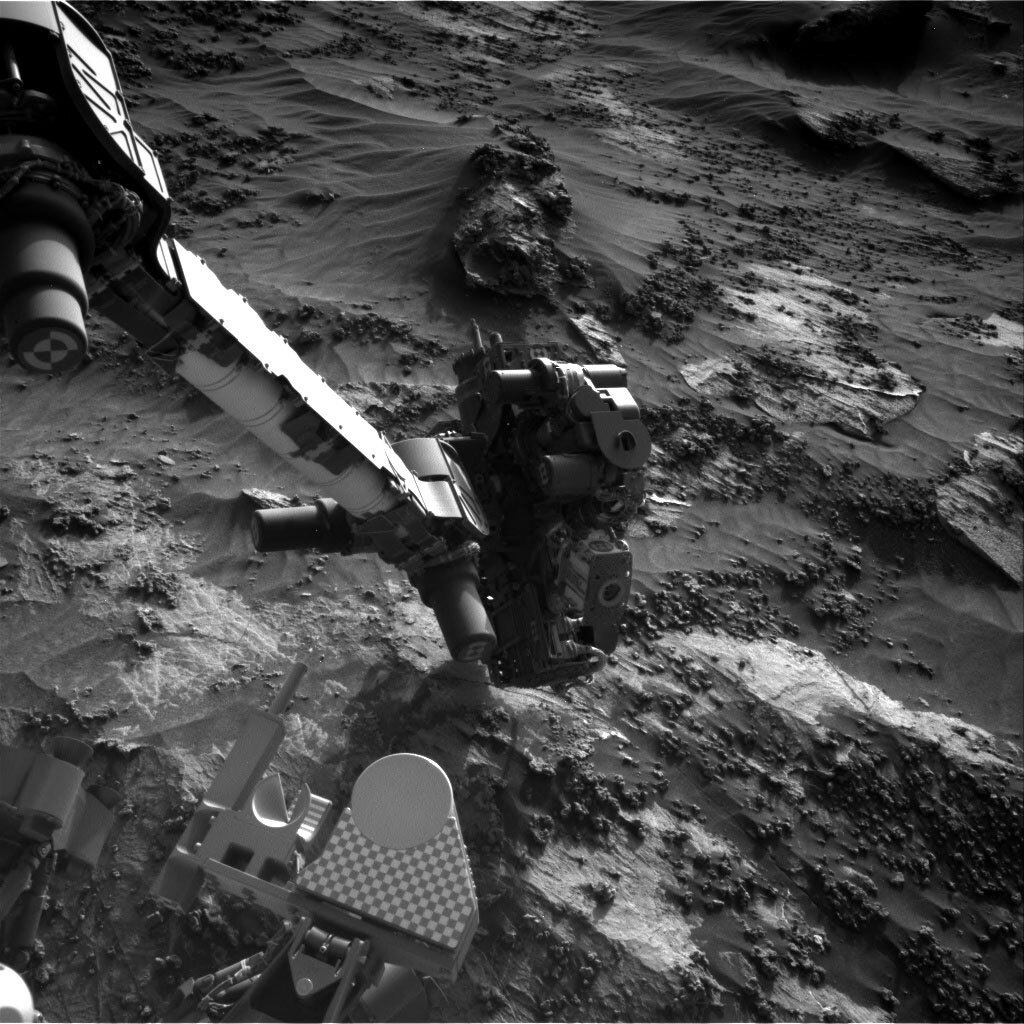1 min read

Curiosity continues her climb up Mt. Sharp, navigating her way towards the southwest. In the previous plan, Curiosity traveled approximately 40 meters through fairly rocky terrain that coincides with the transition region between the clay-bearing bedrock that we've been exploring for the past few years and the overlying sulfate-bearing materials. The science team is carefully characterizing this compositional transition both laterally and vertically, hoping to identify key evidence for environmental transitions along the way. The current transition zone was one of the main reasons why NASA and the scientific community selected Gale crater as the Curiosity landing site. Spectral evidence from the Compact Reconnaissance Imaging Spectrometer for Mars (CRISM) instrument showed a clear compositional transition here that might be indicative of significant environmental change recorded in the rock record. Curiosity is now in a position to begin understanding and unraveling this environmental history!
In the current plan, Curiosity will be acquiring a lot of local and long-distance imagery, as well as some compositional measurements of local bedrock and diagenetic features. The plan will end with a ~25 meter drive to the southwest as we continue our way through this transition zone.
Written by Mark Salvatore, Planetary Geologist at University of Michigan







